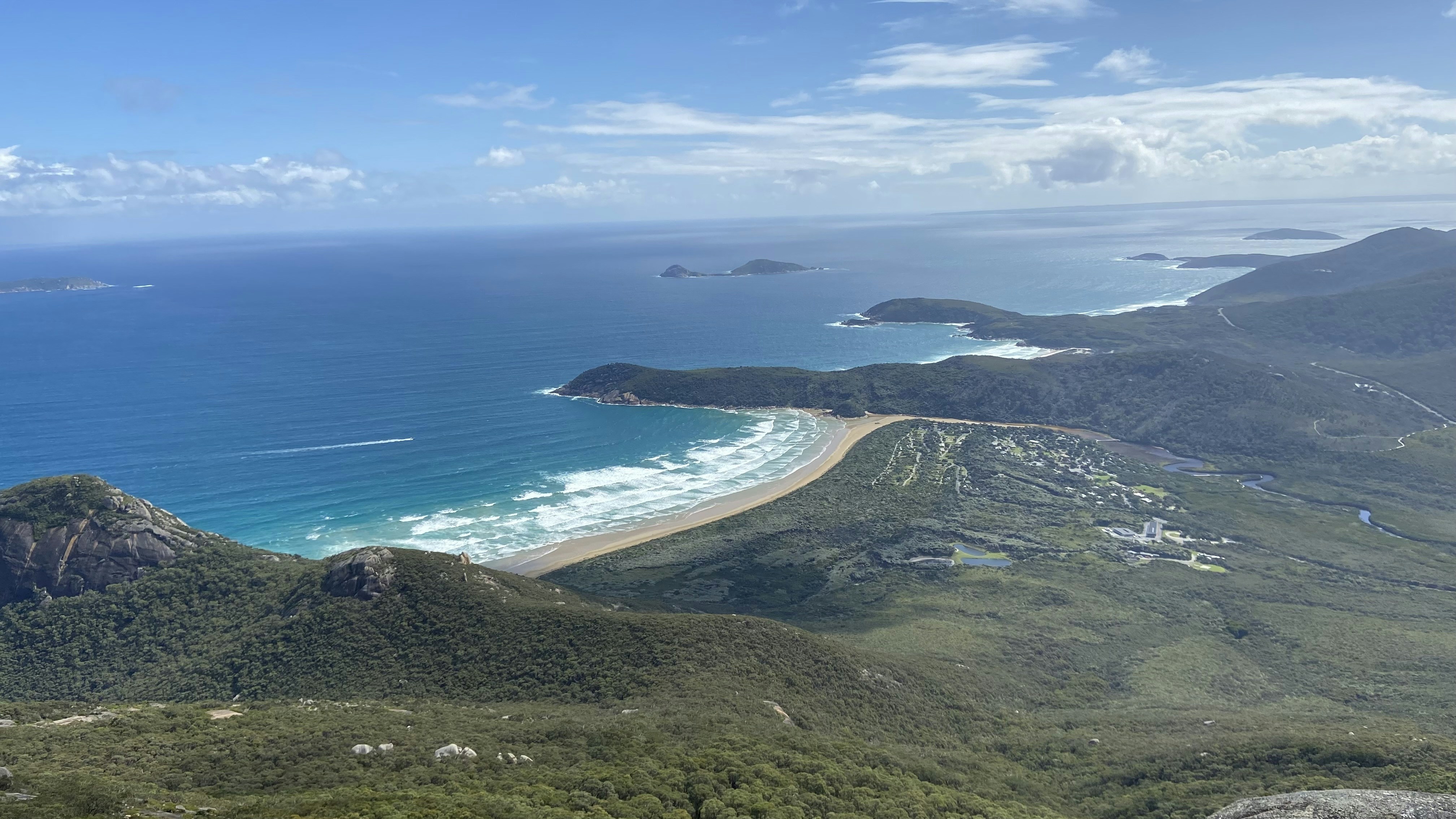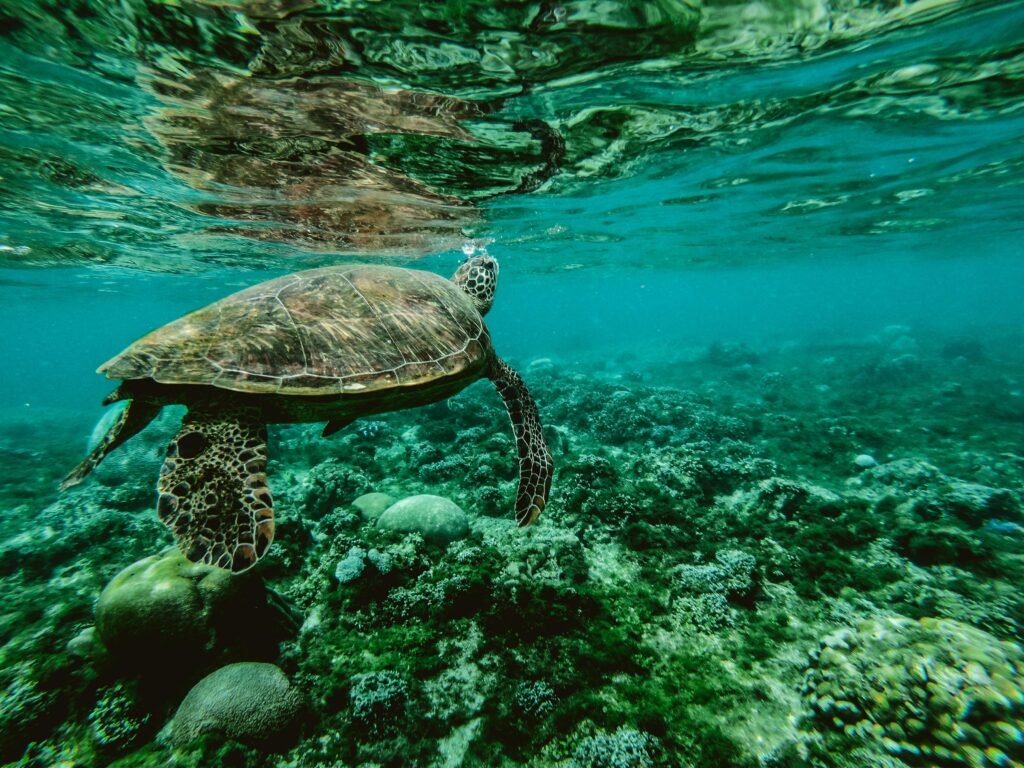Introduction to Oceania’s Natural Beauty
Oceania, a vast and diverse region, is renowned for its spectacular natural landscapes that showcase the planet’s ecological richness. Spanning across the Pacific Ocean, this geographical area includes notable countries such as Australia, New Zealand, and a multitude of stunning Pacific Islands. Each of these locations contributes uniquely to the overarching splendor of Oceania, marked by a rich tapestry of diverse ecosystems and unparalleled scenic beauty.

Australia, often celebrated for its iconic natural landmarks like the Great Barrier Reef and Uluru, presents a vast array of environments, from arid deserts to lush rainforests. The continent’s unique wildlife, comprising numerous species found nowhere else on Earth, significantly enhances its ecological significance, attracting researchers and nature enthusiasts alike. New Zealand, with its dramatic mountain ranges and picturesque coastlines, offers another facet of Oceania’s natural allure, characterized by its deep fjords and geothermal activity. The islands are not only a haven for adventure-seekers but also preserve unique flora and fauna as part of their heritage.
Moreover, the Pacific Islands encompass a myriad of landscapes, from striking volcanic formations to coral atolls teeming with marine life. These islands hold not only immense environmental value but also carry profound cultural significance, often serving as the heart of indigenous traditions and practices. The intricate relationship between the local communities and their natural surroundings is fundamental to understanding the importance of conservation in these areas.
The diverse ecosystems throughout Oceania, ranging from rainforests and coral reefs to desert regions and mountainous terrains, collectively exemplify an extraordinary natural heritage. As we delve deeper into each country’s remarkable offerings in the sections that follow, it becomes evident that Oceania’s landscapes are not just a feast for the eyes, but also a vital component of our planet’s ecological equilibrium.
The Majestic Fjords of New Zealand
New Zealand is renowned for its stunning natural landscapes, and among its most iconic features are the majestic fjords that attract travelers and nature enthusiasts from around the globe. The two most famous fjords, Milford Sound and Doubtful Sound, showcase some of the most dramatic scenery in Oceania. These fjords are characterized by towering cliffs that rise abruptly from the deep blue waters, creating a truly breathtaking visual spectacle.
Milford Sound is often described as the crown jewel of New Zealand’s fjords. The sheer granite cliffs, some reaching heights of over 1,200 meters, are interspersed with cascading waterfalls, especially during the rainy season when rainfall can create spectacular displays. Visitors to Milford Sound can enjoy boat cruises that provide an up-close view of the cliffs and waterfalls, as well as the marine life inhabiting these waters, including dolphins, seals, and various fish species. The serene atmosphere and striking landscapes make for an unforgettable experience.
Doubtful Sound, less frequented than its counterpart, offers a different kind of adventure. It is larger and deeper, renowned for its tranquillity and lush rainforest surroundings. The fjord is accessible only by boat or a scenic bus ride, further contributing to its untouched charm. Wildlife enthusiasts will find abundant opportunities to observe diverse species, including the rare Fiordland penguin and various bird species. The experience of navigating through its lush, green surroundings and witnessing the spectacular scenery is a testament to New Zealand’s rich natural heritage.
The fjords of New Zealand truly embody the essence of Oceania’s breathtaking natural wonders. Their dramatic images, unique ecosystems, and incredible wildlife experiences make them a must-visit destination for those seeking the awe of nature.
The Australian Outback: A Rugged Beauty
The Australian Outback is a vast and rugged landscape that captivates the imagination with its sheer size and dramatic natural features. Spanning across much of the continent, this remote region offers a unique view of Australia’s diverse ecological and geological characteristics. Its striking rocky formations, including the iconic Uluru, which is sacred to the Aboriginal people, represent both an impressive natural wonder and a pivotal part of Australia’s cultural heritage. The rich red hues of the earth contrast beautifully against the azure sky, creating a picturesque setting that changes throughout the day, especially during sunrise and sunset when the colors are breathtaking.

This harsh environment is filled with an array of wildlife that has adapted to survive in its challenging conditions. The Outback is home to kangaroos, emus, and numerous bird species, as well as reptiles and insects that thrive in the arid climate. Adventure seekers visiting the Australian Outback can partake in various activities such as hiking and camping, allowing them to immerse themselves in nature while witnessing the incredible biodiversity firsthand. Trails like the Larapinta Trail provide an opportunity for trekking enthusiasts to explore the scenic vistas that are unique to the land.
Additionally, the Aboriginal culture, woven deeply into the fabric of the Outback, offers travelers profound insights into the connection between the land and its first peoples. Guided tours led by Aboriginal communities often highlight cultural history, storytelling, and traditional practices, enriching the experience of visitors. The blend of rugged beauty, dramatic rock formations, and cultural significance makes the Australian Outback a must-visit destination for those seeking adventure and an appreciation for nature’s splendor.
Volcanic Islands of Vanuatu and the Solomon Islands
The volcanic islands of Vanuatu and the Solomon Islands represent some of the most captivating natural wonders in Oceania. These regions are renowned for their dramatic landscapes shaped by geographical forces, including active volcanoes, lush rainforests, and pristine beaches. Vanuatu, an archipelago of 83 islands, boasts several active volcanoes, notably Mount Yasur on Tanna Island, where visitors can witness spectacular eruptions in real-time. The Solomon Islands, comprising over 900 islands, also feature active volcanic sites, such as Mount Makarakomburu on Guadalcanal, which adds to the allure of these territories.
The rich biodiversity within the rainforests of these islands is another significant aspect that enchants travelers. These lush ecosystems are home to a plethora of flora and fauna that thrive in the humid tropical climate. Unique in their vibrancy, the ecosystems contribute to a remarkable natural palette, making them ideal spots for outdoor activities such as hiking, bird watching, and exploring endemic species. The juxtaposition of volcanic mountains against turquoise lagoons further enhances the visual appeal, attracting photographers and adventurers alike.
Culturally, Vanuatu and the Solomon Islands hold profound significance for the indigenous populations, who have cultivated a deep connection to the land and its resources for centuries. Traditional practices and customs remain integral to daily life, often influenced by the volcanic landscape. These islands offer a glimpse into unique cultural experiences, including traditional dances, local markets, and community festivals, enhancing the travel experience. Furthermore, the burgeoning adventure tourism sector presents ample opportunities for visitors to engage in eco-friendly tourism, exploring the volcanic terrain while contributing to local economies.
The Great Barrier Reef: Nature’s Underwater Wonderland
The Great Barrier Reef, located off the coast of Queensland, Australia, is one of the most renowned natural wonders in the world. Spanning over 2,300 kilometers and comprising approximately 2,900 individual reefs and 900 islands, this remarkable ecosystem is a vibrant underwater paradise. The reef is home to an extraordinary array of marine life, including over 1,500 species of fish, 400 types of coral, and countless other organisms, making it one of the most biologically diverse ecosystems on the planet.
The ecological importance of the Great Barrier Reef cannot be overstated. It serves as a crucial habitat for numerous marine species, many of which are endangered or threatened. Additionally, the reef plays a vital role in maintaining a balanced marine environment and contributes significantly to the health of the ocean. Through its complex food webs and biological processes, the Great Barrier Reef supports not only individual species but also entire marine communities. However, this precious ecosystem is currently facing significant threats from climate change, including coral bleaching and ocean acidification, as well as human activities such as overfishing and pollution.

Fiordland National Park: A UNESCO World Heritage Site
Fiordland National Park is a remarkable natural wonder located in the southwestern corner of New Zealand’s South Island. Renowned for its dramatic landscapes, the park is characterized by its rugged mountains, deep valleys, and stunning fiords, making it a prime example of the breathtaking scenery that Oceania is known for. Established in 1952, it was later designated as a UNESCO World Heritage Site in recognition of its unique natural beauty and significant geological features. This status highlights the international importance of the area, which is often regarded as one of the most impressive untouched wildernesses in the world.
The park’s fiords, including the famous Milford Sound and Doubtful Sound, are carved deeply into the land by glacial activity, creating dramatic cliffs that drop sharply into the sea. These awe-inspiring landscapes are complemented by lush rainforests, alpine lakes, and an array of wildlife. The region is home to rare flora and fauna, such as the endangered yellow-eyed penguin and the native kākāpō parrot, further emphasizing its ecological significance.
For outdoor enthusiasts, Fiordland National Park offers numerous hiking trails that cater to all skill levels. The Milford Track and Routeburn Track are among the most popular, providing trekkers the opportunity to traverse breathtaking valleys and encounter stunning waterfalls. To fully appreciate the park’s magnificence, the best times to visit are during the warmer months of late spring to early autumn, when the weather is most favorable and wildlife is abundant.
In essence, Fiordland National Park stands as a testament to the natural beauty of Oceania, drawing visitors from around the globe who seek solace in its pristine wilderness. The combination of its majestic fiords, diverse ecosystems, and rich cultural heritage makes it a quintessential destination for anyone wishing to experience the extraordinary landscapes of this region.
Cultural Reflection: Nature’s Impact on Indigenous Peoples
The breathtaking landscapes of Oceania, including its pristine beaches, volcanic mountains, and lush forests, are not merely backdrops for the lives of its indigenous peoples; they are integral to their cultures, stories, and spiritual beliefs. For many Indigenous communities in this region, nature is a living entity, revered and respected, often viewed as a source of life that shapes identity and sustains traditions.

In these cultures, the connection to the land is deeply spiritual. Many indigenous groups believe that their ancestors dwell within these natural wonders, and as such, they draw a profound sense of identity and purpose from the environment around them. For instance, the Maori of New Zealand hold specific sites, such as mountains and rivers, as sacred, viewing them as ancestors themselves—a concept encapsulated in the Maori term “tīpuna.” This profound respect for the natural world is reflected in their myths, art, and communal practices, all of which celebrate the landscape and its resources.
The stories of creation often tell of how the land was formed and populated, underlining the belief that humanity is intricately linked to nature. These narratives are passed down through generations and serve as both educational tools and a means for cultural preservation. With the advent of modernization, the significance of these natural wonders has become more pivotal as indigenous peoples strive to maintain their traditions amidst changing environmental and socio-political landscapes.
Preserving these natural environments is thus not only crucial for ecological sustainability but also essential for safeguarding the cultural heritage of indigenous populations. The landscapes provide a canvas on which their histories, values, and identities are painted, creating a narrative rich in respect and reverence. Hence, it becomes paramount to foster an understanding of the intertwined nature of ecology and anthropology in Oceania, ensuring that both the environment and its indigenous cultures are valued and preserved for generations to come.
Travel Tips for Exploring Oceania’s Natural Wonders
Oceania is home to an array of natural wonders that beckon adventure seekers and nature lovers. However, to fully appreciate these breathtaking landscapes while ensuring responsible tourism, certain travel tips are essential. First and foremost, preparation is key. When planning your trip, consider the seasonal variations in weather and the best times to visit particular sites. For example, visiting during the dry season is ideal for experiencing destinations like the Great Barrier Reef, while the cooler months may offer more pleasant hiking conditions in New Zealand’s national parks.
When it comes to packing, essential items such as reusable water bottles, sunscreen, and sturdy footwear should be at the top of your list. Lightweight clothing appropriate for varying climates will also enhance your comfort while exploring. Additionally, it’s advisable to carry a first-aid kit, along with a small amount of local currency, as some remote areas may not accept cards.
Transportation is another vital aspect to consider. Renting a car offers flexibility to explore the hidden gems of the region, while public transport might be ideal for city explorations. Consider engaging local guides who possess invaluable knowledge about the area’s ecosystems and can provide a deeper understanding of the natural attractions. Furthermore, choosing guided tours that emphasize eco-friendly practices ensures that your exploration aligns with sustainable tourism standards.
Lastly, it’s important to minimize your ecological footprint during your travels. Observing designated trails, avoiding littering, and respecting wildlife by maintaining safe distances can significantly contribute to preserving Oceania’s natural beauty. Educating yourself about local cultures and practices is also fundamental. By following these practical tips, you can enhance your journey through Oceania’s natural wonders while promoting responsible tourism.
Conclusion: Embracing the Natural Splendor of Oceania
Oceania, with its stunning array of natural wonders, continues to captivate the hearts and minds of those who venture into its diverse landscapes. From the vibrant coral reefs of the Great Barrier Reef to the otherworldly formations of the Franz Josef Glacier, the region showcases an unparalleled combination of beauty and ecological significance. Each natural site not only serves as a testament to the power and artistry of nature but also as a vital component of the planet’s biodiversity.
The breathtaking landscapes in Oceania, which include the lush rainforests of Papua New Guinea and the dramatic cliffs of the Australian coastline, invite adventurers and nature enthusiasts to witness firsthand the magnificence that our planet has to offer. Traveling through such varied environments allows individuals to cultivate a deeper appreciation for the planet’s fragile ecosystems and encourages a sense of responsibility to protect these irreplaceable treasures. The natural wonders found in this region are not merely tourist attractions; they are vital habitats that support countless species and contribute significantly to global ecological health.
Exploring Oceania’s myriad environments reveals not just the spectacular beauty of the region, but also highlights the intricate interconnectedness that sustains life. Whether it’s hiking through New Zealand’s national parks or snorkeling in the crystal-clear waters of Micronesia, each experience fosters a strong connection with nature. This invitation to embrace adventure is coupled with a call to action for sustainable tourism practices. As we revel in the splendor of Oceania, it is crucial to remember our role in preserving these extraordinary landscapes for future generations. By engaging with the natural world responsibly, we can ensure that the breathtaking wonders of Oceania are protected and cherished for years to come.









